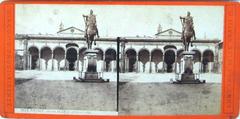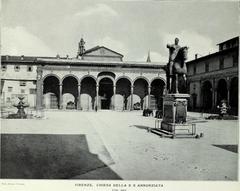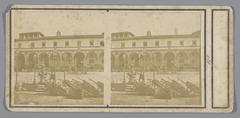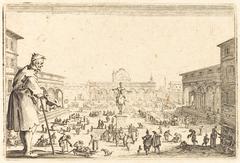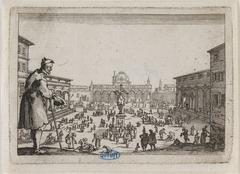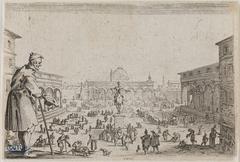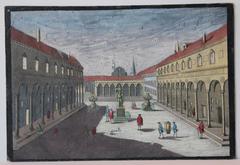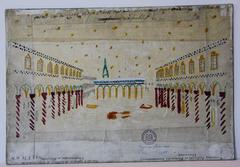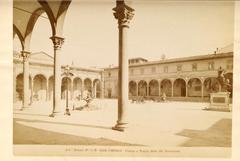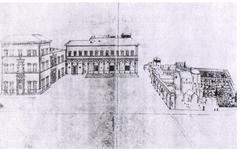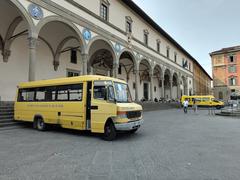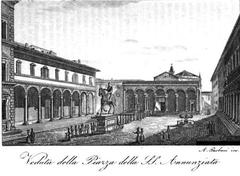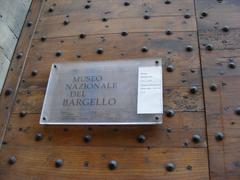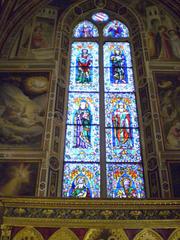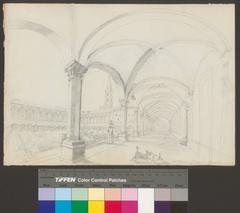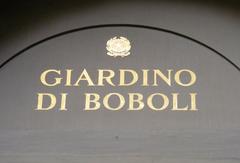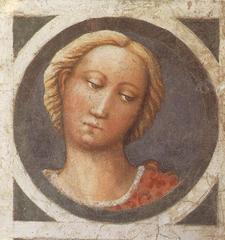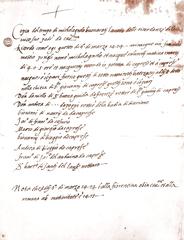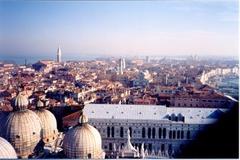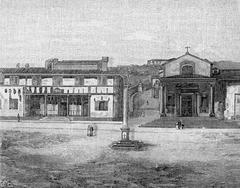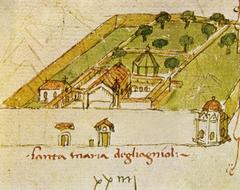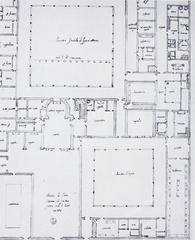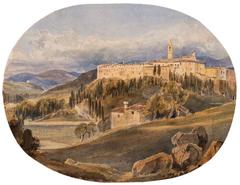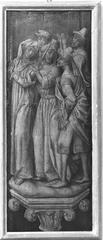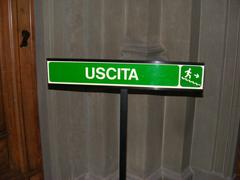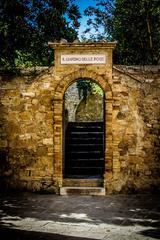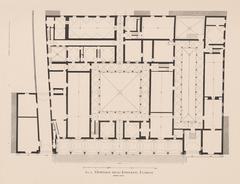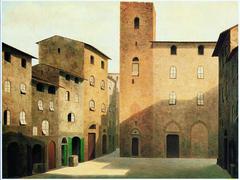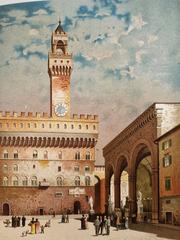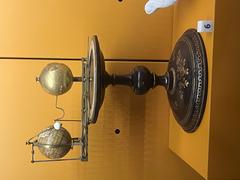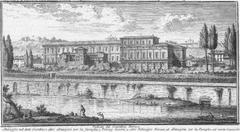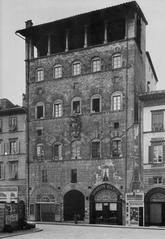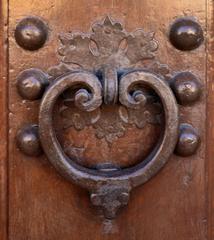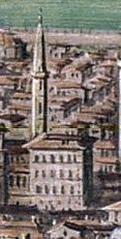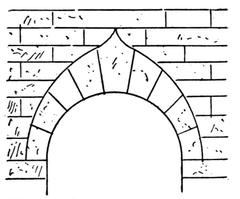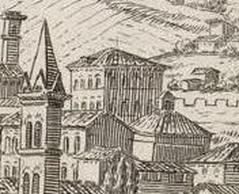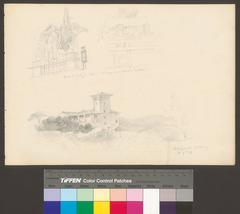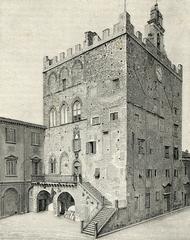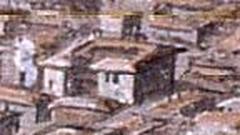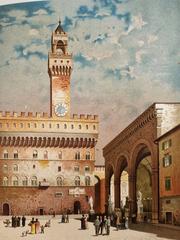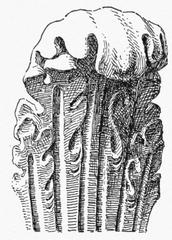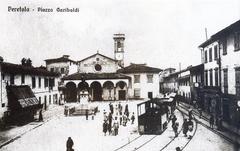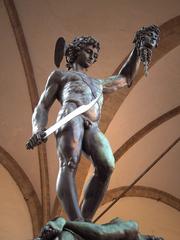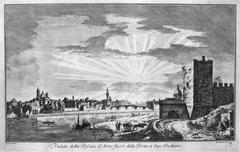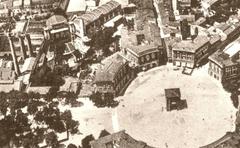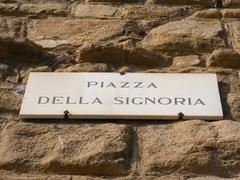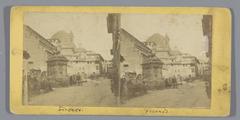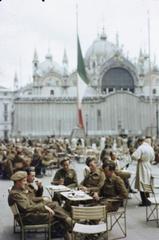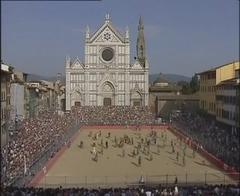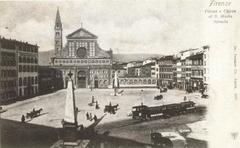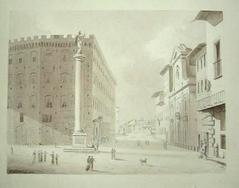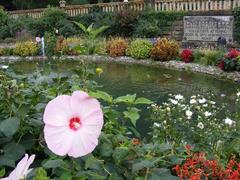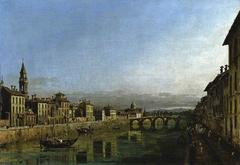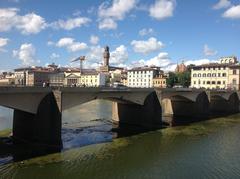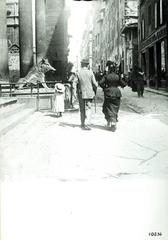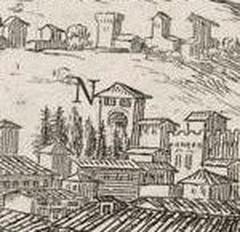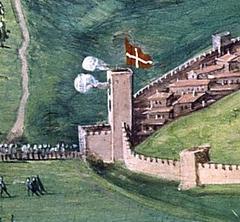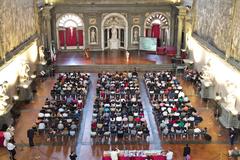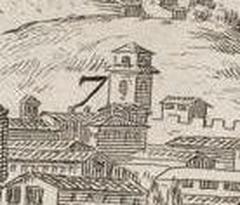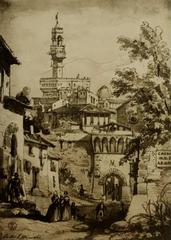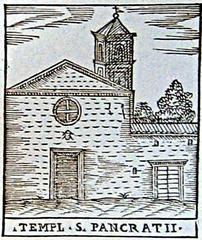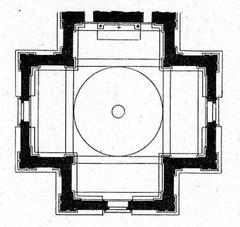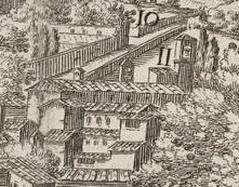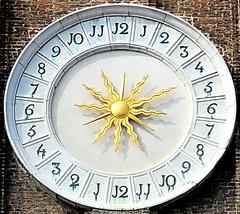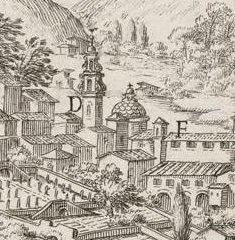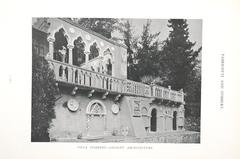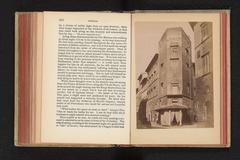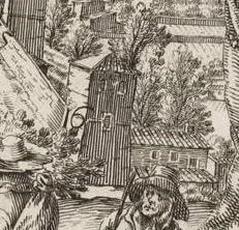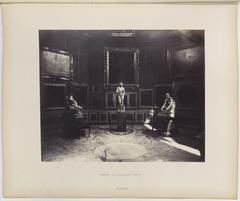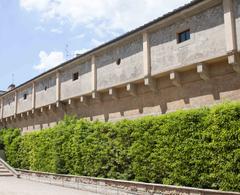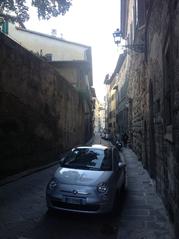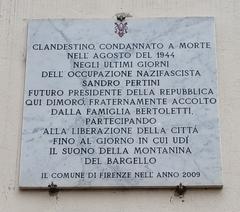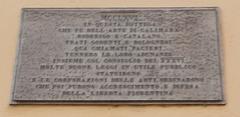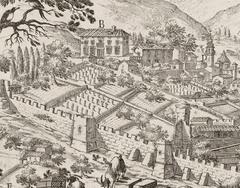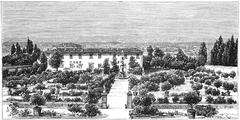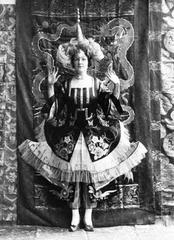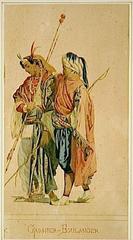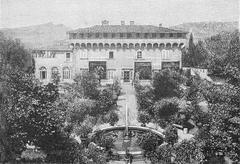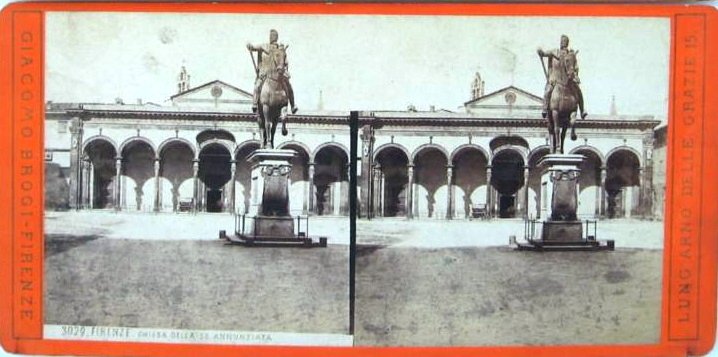
Visiting Hours, Tickets, and Historical Insights of Piazza della Signoria in Florence, Italy
Date: 18/07/2024
Introduction
Piazza della Signoria, located in the heart of Florence, Italy, is an open-air museum that pulsates with historical and cultural significance. As the political and social hub of Florence for centuries, this iconic square offers visitors a unique glimpse into the city’s rich past, from its Roman foundations to its Renaissance splendor. The Piazza’s history is deeply intertwined with the powerful Medici family and the evolution of Florence from a republic to a duchy. This square is not just a collection of monuments but a living testament to Florence’s artistic and political legacy. (source, source)
Dominated by the imposing Palazzo Vecchio, the Piazza has been the stage for numerous historical events, including public executions, political rallies, and grand celebrations. It houses replicas of famous statues such as Michelangelo’s David and Donatello’s Judith and Holofernes, symbolizing Florence’s rich cultural heritage and its pivotal role during the Renaissance. The Piazza also features masterpieces like Cellini’s Perseus with the Head of Medusa and Giambologna’s The Rape of the Sabine Women, further cementing its status as a beacon of Renaissance art and architecture. (source, source)
This comprehensive guide will delve into the Piazza’s history, its major attractions, visiting hours, ticket information, and practical travel tips, ensuring you make the most of your visit to this remarkable square. Whether you’re interested in the political intrigues of the past, the artistic masterpieces on display, or simply soaking in the vibrant atmosphere, Piazza della Signoria offers something for everyone.
Table of Contents
- [Exploring Piazza della Signoria - History, Visiting Hours, and Tickets](#exploring-piazza-della-signoria---history-visiting-hours-and-ticketsexploring-piazza-della-signoria-history-visiting-hours-and-tickets)
- [The Birth of a Piazza - From Roman Forum to Medieval Hub](#the-birth-of-a-piazza---from-roman-forum-to-medieval-hubthe-birth-of-a-piazza-from-roman-forum-to-medieval-hub)
- [The Rise of the Signoria and the Piazza’s Transformation](#the-rise-of-the-signoria-and-the-piazzas-transformationthe-rise-of-the-signoria-and-the-piazzas-transformation)
- [A Stage for Power, Art, and Public Spectacles](#a-stage-for-power-art-and-public-spectaclesa-stage-for-power-art-and-public-spectacles)
- [From Republic to Duchy - The Medici Influence](#from-republic-to-duchy---the-medici-influencefrom-republic-to-duchy-the-medici-influence)
- [The Uffizi Gallery and the Loggia dei Lanzi - Expanding the Piazza’s Significance](#the-uffizi-gallery-and-the-loggia-dei-lanzi---expanding-the-piazzas-significancethe-uffizi-gallery-and-the-loggia-dei-lanzi-expanding-the-piazzas-significance)
- [Visitor Information - Tickets, Hours, and Tips](#visitor-information---tickets-hours-and-tipsvisitor-information-tickets-hours-and-tips)
- [Accessibility and Special Events](#accessibility-and-special-eventsaccessibility-and-special-events)
- [The Piazza Today - A Living Museum and Vibrant Public Space](#the-piazza-today---a-living-museum-and-vibrant-public-spacethe-piazza-today-a-living-museum-and-vibrant-public-space)
- [FAQ](#faqfaq)
- [Conclusion](#conclusionconclusion)
- [References](#referencesreferences)
Exploring Piazza della Signoria - History, Visiting Hours, and Tickets
The Birth of a Piazza - From Roman Forum to Medieval Hub
The Piazza’s origins can be traced back to the Roman era. It sits atop the ruins of the ancient Roman forum of Florentia, remnants of which can still be seen today. During the Middle Ages, the area transformed into a bustling public space, although less grand and unified than its present form.
The Rise of the Signoria and the Piazza’s Transformation
The Piazza’s defining moment arrived in the 13th century with the rise of the Signoria, the governing body of the Florentine Republic. The Palazzo Vecchio, the imposing fortress-like structure, was erected between 1299 and 1314 to house the Signoria. This marked the beginning of the Piazza’s transformation into the political center of Florence.
A Stage for Power, Art, and Public Spectacles
Over the following centuries, the Piazza della Signoria became a stage for showcasing Florentine power, artistry, and public life. It witnessed:
- Political gatherings and speeches: The Piazza was the site of public assemblies, pronouncements, and even executions, reflecting the tumultuous political climate of the Florentine Republic.
- Artistic patronage and display: The Medici family, who rose to prominence in the 15th century, used the Piazza to display their wealth and patronage of the arts. Donatello’s David and Michelangelo’s David (later moved to the Accademia Gallery) were both originally placed in the Piazza, showcasing the artistic brilliance of the Renaissance.
- Public celebrations and festivals: The Piazza hosted numerous public festivals, religious processions, and celebrations, solidifying its role as the social hub of Florence.
From Republic to Duchy - The Medici Influence
The Medici family’s influence on the Piazza’s development is undeniable. Cosimo I de’ Medici, the first Grand Duke of Tuscany, commissioned Giorgio Vasari to renovate and expand the Palazzo Vecchio in the mid-16th century, transforming it into a lavish palace reflecting the Medici’s shift from merchants to monarchs.
The Uffizi Gallery and the Loggia dei Lanzi - Expanding the Piazza’s Significance
The construction of the Uffizi Gallery, commissioned by Cosimo I and designed by Vasari, further cemented the Piazza’s importance. Initially intended as offices for the Florentine magistrates (Uffizi meaning “offices”), the building eventually housed the Medici’s impressive art collection, laying the foundation for one of the world’s most renowned art museums.
The Loggia dei Lanzi, built in the 14th century, also played a crucial role in the Piazza’s evolution. This open-sided structure, originally used for ceremonies and proclamations, became an outdoor sculpture gallery under the Medici, showcasing masterpieces like Cellini’s Perseus with the Head of Medusa.
Visitor Information - Tickets, Hours, and Tips
- Visiting Hours: Piazza della Signoria is an open public space and can be visited any time of the day. However, if you wish to visit the Palazzo Vecchio or the Uffizi Gallery, check their official websites for the most up-to-date visiting hours.
- Tickets: Entry to Piazza della Signoria is free. Tickets are required for the Palazzo Vecchio and the Uffizi Gallery. They can be purchased online or at the entrance.
- Travel Tips: Wear comfortable shoes as the Piazza is paved with stone. Early morning or late afternoon visits are recommended to avoid crowds.
- Nearby Attractions: Don’t miss the Duomo, Ponte Vecchio, and the Basilica of Santa Croce, all within walking distance.
Accessibility and Special Events
The Piazza is wheelchair accessible. Check the official Florence tourism website for information on guided tours and special events. The Piazza regularly hosts cultural and public events, adding to its vibrant atmosphere.
The Piazza Today - A Living Museum and Vibrant Public Space
Today, Piazza della Signoria remains a vibrant public space, attracting locals and tourists alike. It is a living museum, surrounded by architectural marvels, adorned with sculptures, and steeped in history. The Piazza continues to host events, rallies, and celebrations, reminding visitors of its enduring role as the heart of Florence.
FAQ
- What are the opening hours for Piazza della Signoria? The Piazza is open 24/7. However, museums and galleries around it have specific hours.
- Do I need tickets to visit? The Piazza itself is free, but tickets are required for the Palazzo Vecchio and Uffizi Gallery.
- Are there guided tours available? Yes, several guided tours are available. Check with local tour operators or the official Florence tourism website.
Conclusion
Piazza della Signoria remains a vibrant and essential part of Florence, encapsulating the city’s rich tapestry of history, art, and culture. From its origins as a Roman forum to its transformation into the political heart of the Florentine Republic, the Piazza has witnessed and contributed to the evolution of Florence. It is a space where the past and present seamlessly blend, offering visitors an immersive experience that is both educational and awe-inspiring. (source, source)
Today, Piazza della Signoria continues to attract locals and tourists alike, serving as a living museum surrounded by architectural marvels and adorned with sculptures. It is more than just a collection of landmarks; it is a testament to Florence’s enduring spirit and its significant contributions to art and politics. By exploring its treasures, participating in its vibrant public life, and attending its numerous events, visitors can truly appreciate the Piazza’s enduring role as the heart of Florence. Whether you’re marveling at the Palazzo Vecchio, enjoying a performance at the Loggia dei Lanzi, or simply people-watching from a nearby café, Piazza della Signoria offers a unique and unforgettable experience. (source, source)
For the latest updates and more travel tips, consider downloading the mobile app Audiala, checking out other related posts, or following on social media. Your visit to Piazza della Signoria will undoubtedly be a highlight of your time in Florence, offering a rich blend of history, art, and vibrant public life.
References
- Exploring Piazza della Signoria - History, Visiting Hours, and Tickets, 2024 https://www.visitflorence.com/florence-churches/climbing-to-the-top-of-palazzo-vecchio.html
- Exploring Piazza della Signoria - Visiting Hours, Tickets, and Major Attractions in Florence, 2024 https://www.gucci.com/us/en/st/stories/places/article/gucci-garden-florence
- Ultimate Guide to Visiting Piazza della Signoria - Tips, Tickets, and Best Times, 2024 https://www.visitflorence.com/florence-churches/the-loggia-dei-lanzi.html
- Ultimate Guide to Visiting Piazza della Signoria - Tips, Tickets, and Best Times, 2024 https://www.visitflorence.com/florence-churches/the-fountain-of-neptune.html
